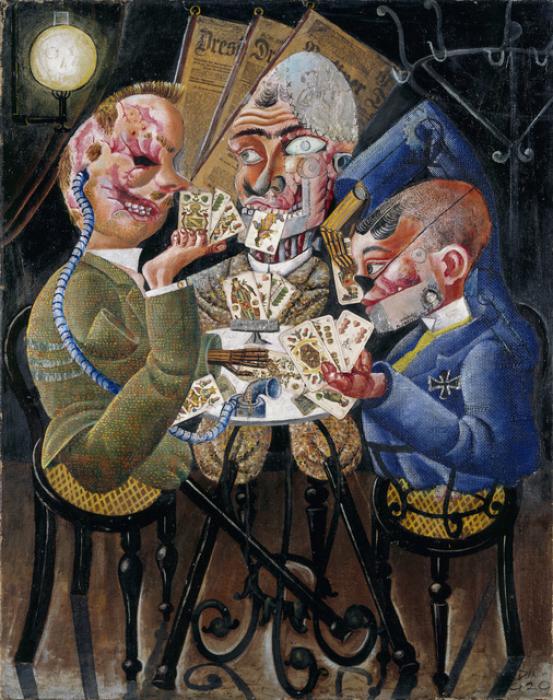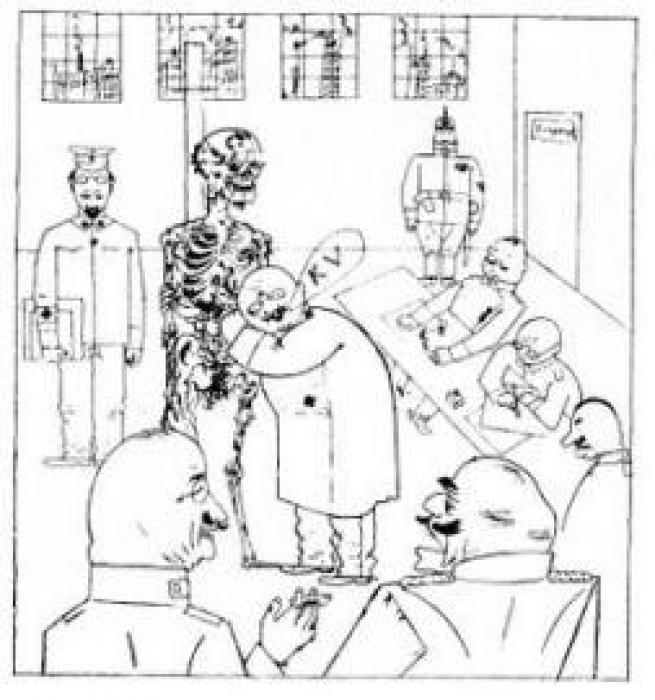Germany: A Winter's Tale (c. 1917)
Germany: A Winter's Tale, is close in style and composition to A Funeral: Tribute to Oskar Panizza(1917-18), which was created in the same time period. Both reference the shattered space of Cubism and the motion of Futurism. Grosz utilizes allegory throughout in order to maximize the impact of each figure and object within the tumultuous space of the painting. In the center, a man representative of the bourgeoisie readies himself to consume a meal, while a riot of bodies swirls around his head. The three figures at the bottom represent the church, state, and school, all of which spoon-feed their ideals to the receptive man. Those in control studiously ignore the resulting chaos, represented by figures such as the sailor, who Grosz declared to be a symbol of revolution.













 ClassTools 3D Gallery Generator!
ClassTools 3D Gallery Generator! Credits
Credits